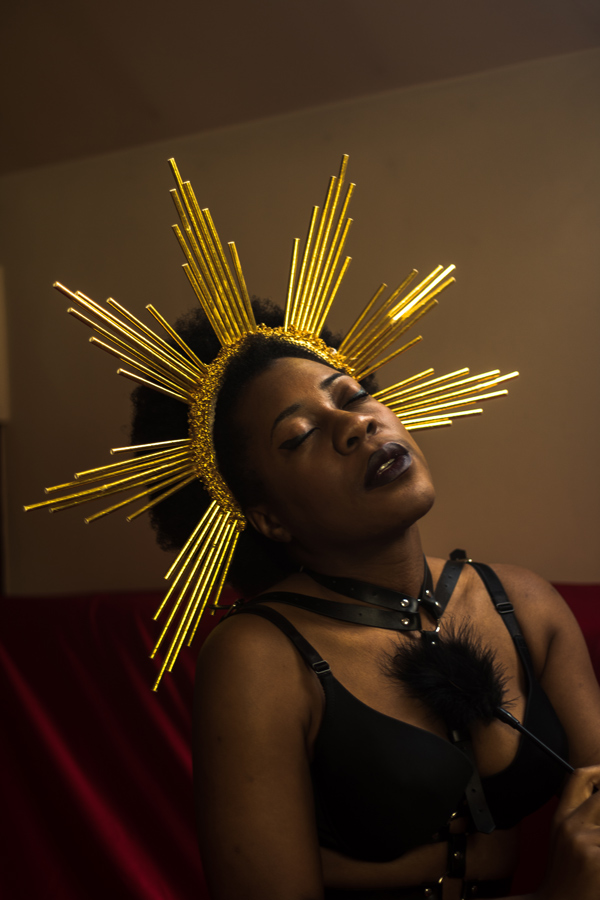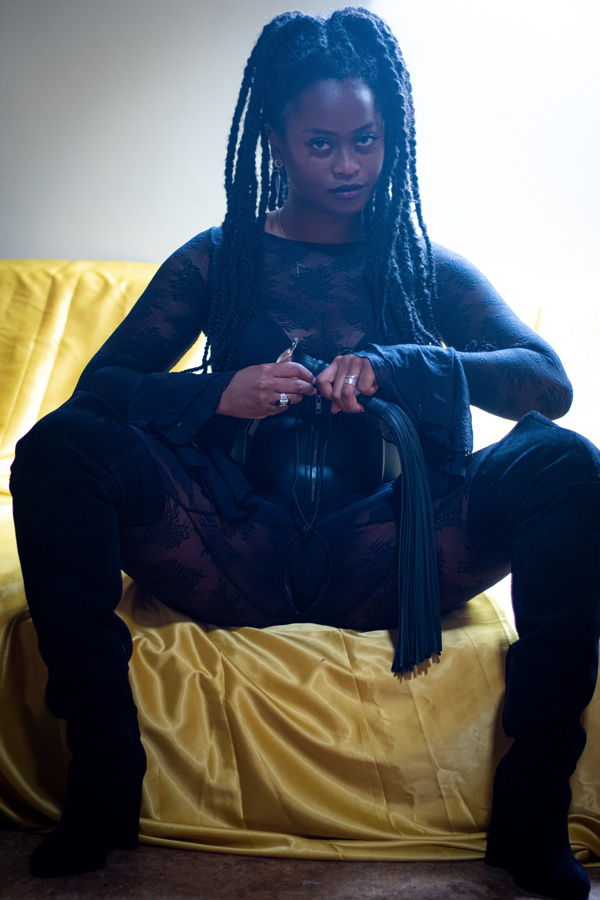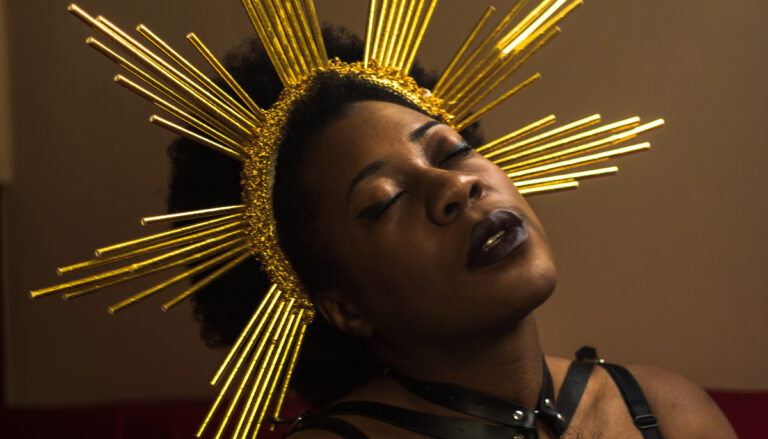‘Rules are made to be broken’: Meet the BDSM dominatrixes destroying archaic ideas of femininity
We all know the name of that film that took to the box office in 2015 and brought the word ‘BDSM’ to our living room conversations. The moody Christian Grey and his infamous ‘Red Room’, where pain becomes pleasure, were inescapable. BDSM soon became a code word for the world of whips and constraints, consent forms signed in boardrooms and tall white men who live ‘scandalous’ double lives as a dominant (dom) to a female damsel—one who is a meek submissive (sub).
However, the movie (as well as the books it is adapted from) failed in presenting the fact that BDSM expands much further than such binaries. From women in the position of the dominatrix to men finally finding a safe space to explore an identity outside toxic heteronormative masculinity, the subculture is a catalyst in redefining what the face of femininity looks like and could be the key to changing the idea of gender norms as we know it.
What is BDSM?
The acronym BDSM represents ‘Bondage’ and ‘discipline’ (or domination), ‘sadism’ (or submission) and ‘masochism’. Within the movement is an explorative playground where partners can take on different roles and delve into a wide array of sexual activities, kinks and dynamics. Generally speaking, in these dynamics, there’s often a dominant/master, who is a sadist and administers pain, coupled with a submissive, who is typically a masochist and receives pain—both derive pleasure from their respective roles. This can be through various physical forms such as spanking, biting, bondage, role-playing and more. Through BDSM, one can find pleasure in pain but also discover other, intimate hidden parts of themselves—a journey that uncovers their personal limits and desires through means that are not always sexual in nature.
A journey that is now, thankfully, being led by women.
The female frontiers of domination
When we think of those who would be considered dominant in BDSM relationships, we often marry our ideas with those who society has conditioned us to believe normally hold power. This is why we often think of men as doms. These concepts are further reinforced by, pardon-the-pun, dominant pop culture moments that have us in a chokehold like the Fifty Shades of Grey era, whereby a dom is depicted as a tall brooding white cis-male who solely possesses the authority to dominate in the dom/sub dynamic. Yet in the real world of BDSM communities, women and non-binary people can also be doms—a fact that is often ignored. It is the assertive confidence and curiosity of female and non-binary doms that continue to breakdown the rigid binaries that still exist in gender conformity.
Aurélie, an afro-feminist dominatrix from Brussels, first entered the world of BDSM when she met a romantic partner who wanted to push her into further exploring herself. “I have always been a free spirit,” she told SCREENSHOT. “I believe that rules are made to be broken, especially if they are not there to protect me.” Through BDSM, Aurélie has been able to further exercise her naturally dominant and expressive energy—despite the fact that, as the dominatrix herself admitted, it has always been rare to meet women who are doms in the BDSM scene, “especially black women.”

Aurélie’s upbringing was rooted in femininity. Without a significant father figure in her life, her family life consisted of just one strong woman who raised her children independently. Despite this, Aurélie was still unable to escape the traditional African and colonial-Christian ideals of womanhood in the midst of her adolescence. “When you grow up in an African household, at parties, the aunties only tell the girls to get up and serve the food—but I am wearing heels and tired. Why do I need to do that when the men are wearing sneakers?” she said.
Being a dominatrix has allowed Aurélie to live in complete actualisation of who she is without the constraint of false, arbitrary ideas of femininity that continue to envelop us in a patriarchal society. “BDSM allowed me to discover myself more and to inspire others. I’m not less of a woman, I’m just being myself and for that, I don’t care [what people think].”
Mistress RaeRae, a dominatrix and LGBTQIA+ activist, has also experienced the rigid gender ideas that plague black womanhood. “Black women are told how they’re supposed to be, how they’re supposed to act and what they’re supposed to be doing—be it through society, music or the media,” she told SCREENSHOT. RaeRae, who was introduced to BDSM after being approached by someone at a party, found that being a dominatrix allows her to re-appropriate the power she thought she had lost after being a victim of a sex crime. She explained, “BDSM is a way of communicating and making sure that everyone is feeling how they want to feel, everyone is feeling safe and heard and actively giving consent.”

For RaeRae, the notions of femininity that she had been taught as a young black woman are now non-existent in her BDSM practices—which ripple into the safe spaces she creates for her subs. “In BDSM, we are trying to remove all of these types of gender roles and coding,” she shared. “Femininity is a broad spectrum and the definitions of femininity that we normally look at in our society are very one-sided. Femininity can be expressed in many different forms.”
Mistress RaeRae embodies a form of domination that allows for the fluidity of gender to exist—doing away with such gender-restrictive boxes. And in a community where most subs are expected to be women, RaeRae believes that even receivers hold their own power, dominating doesn’t indefinitely equate to ‘the strongest’—further challenging the prevailing ideas of womanhood. “Being a dom has made me understand that there is power even in submissiveness. It isn’t a bad thing to be a nurturer and you don’t lose any power in this because subs are letting the dom know whether they can or cannot continue what they are doing.”
Domme Claire is a dominatrix who has TikTok in the palm of their hands. With over 200,000 followers, their daily videos about their experience as a dom incites curiosity and inspiration. For Claire, BDSM has been a vital tool to tap into both their feminine and masculine energies. “I have always felt a bit weird with the idea of femininity. I think my autism plays a really big role in that because for me, gender is such an abstract concept,” they said. “Even if I’m wearing my seven-inch boots, I feel very powerful and I feel both masculine and feminine at the same time.”
Claire’s ability to tap into both sides of themselves mirrors the vastness of their clientele. “I thought only straight men would want to submit to me—I never thought women would want to pay for my services or even gay men,” they admitted. Domme Claire first got into BDSM while working in a strip club. After getting interesting requests from men, they soon started to play around with kinks and explore their naturally-inclined dominant nature. Their continued professional work as a dom has allowed them to self-actualise themselves in their everyday life, “BDSM has helped me to be more confident and not afraid to speak up. It has been incredibly empowering to break down the social constructs that I have had growing up and become myself more.”
BDSM beyond pop culture
Pop culture trends tend to often mimic—or react to—the core, foundational beliefs of our otherwise-conservative societal structure. Therefore, it is no surprise that BDSM and other alternative ways to practise sex, intimacy and physical relationships continue to be seen as deviant and taboo—take the controversy around solo polyamory, for example. The issue with this perception is that many people are repeatedly blind to how these alternative ways of exploring oneself can actually breed transformational growth within a person and change them positively forever.
Domme Claire has witnessed an inner-growth in their clients that continues to surprise them. “BDSM is a very useful tool, especially when you want to deal with trauma, [though] it is best when you use it in conjunction with therapy,” they said. “There are men who have feminisation kinks which allow them to explore their femininity in a way that is safe and away from misogyny and it’s honestly incredible to watch them grow and embrace all parts of themselves.”
Aurélie further pointed out how BDSM is not just about pleasure nor is it really about pain. “BDSM is about communication, listening and respecting boundaries,” she mentioned. These are all pillars of human connection that need to be constantly worked on and developed, ones that can be nurtured in healthy BDSM relationships and in turn, evolve into the core of our everyday relationships. Mistress RaeRae echoed the same sentiment, “Everybody practises a level of BDSM—they just don’t realise that what they are practising is BDSM,” she said, adding how the practice centres around consent, asking and checking if the participants are okay. “It is a constant exchange of power,” she summed up.
As we speak, female and non-binary doms are redefining gender and pushing a form of BDSM that has personal evolution at its centre. Through the practice, people can find a power within themselves that is often present when one is curious and in tune with their sexual being. With that said, let’s rid ourselves of the limiting taboos surrounding the BDSM community and instead be pleasantly surprised at the transformed version of ourselves that appears on the other side.





